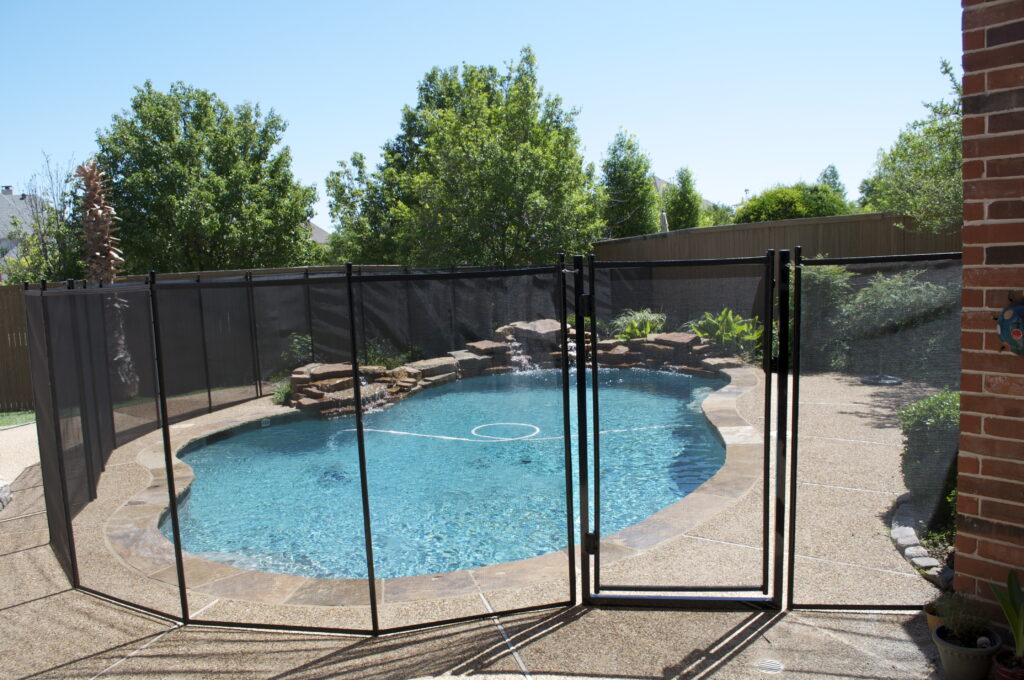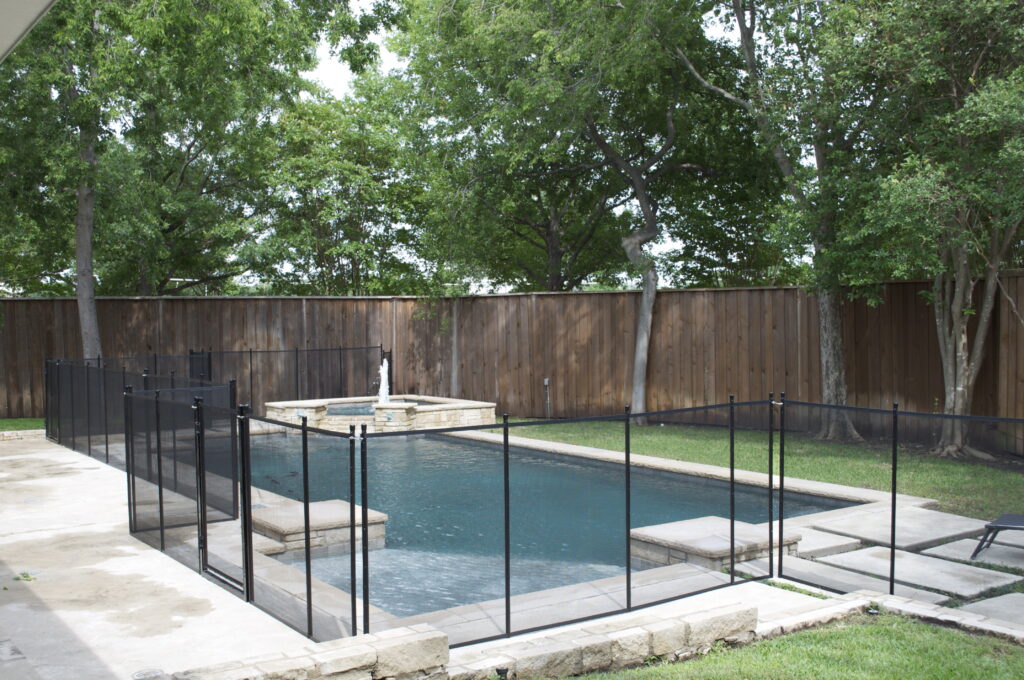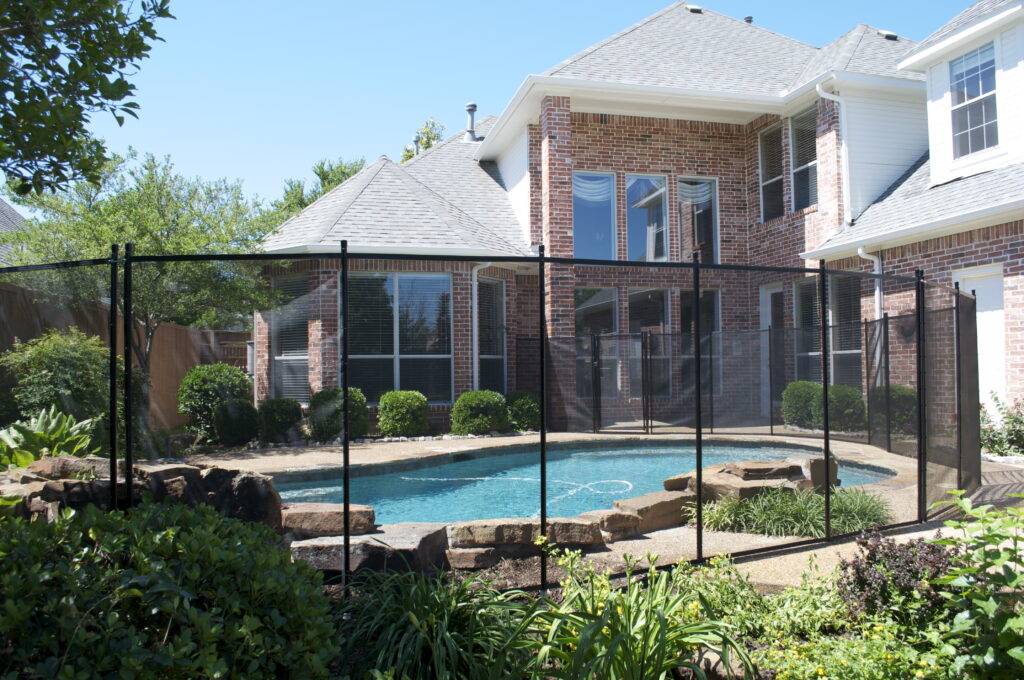Thinking about installing a pool in Rhode Island? Before you dive in, you need to understand the Rhode Island pool fence code and the safety rules that keep everyone protected.
In Rhode Island, pool fence laws are more than just guidelines. They are legal requirements designed to prevent accidents and comply with state and local safety codes.
While Rhode Island has a statewide pool barrier law, each city and town may add its own rules on fence height, gate design, spacing, and alarms.

Rhode Island requires a safety barrier for any pool deeper than 24 inches, and a proper building permit is mandatory for such pools.
Per state law, safety barriers must stand at:
According to Rhode Island state law, any pool enclosure must incorporate barriers into its design to protect against potential drowning.
The top of the barrier shall be at least 48 inches (4 feet) tall above the ground, where measured on the side of the barrier that faces away from the pool area. This height shall be consistent around the entire perimeter.
This requirement isn’t just a number on paper; it’s a safeguard designed with families in mind. A 4-foot fence creates a physical barrier that makes it significantly harder for small children to climb over or access the pool area unsupervised. It’s a simple but powerful measure that gives parents and caregivers extra time to intervene, helping prevent tragic accidents and ensuring the pool remains a place of fun and safety for everyone.
In Rhode Island, pool fences must be designed so that the space between the bottom of the barrier and the ground does not exceed 2 inches. This prevents small children or pets from crawling underneath the fence to reach the pool area.
It’s a detail that might seem minor, but it plays a huge role in overall safety. Even the smallest gap can be an open invitation for a curious toddler or pet to slip through. By keeping that clearance tight, the fence works as intended, a complete, secure barrier that gives families peace of mind every time they’re near the pool.
Any openings in a Rhode Island pool fence, whether between pickets, panels, or decorative elements- must be small enough that a 4-inch sphere cannot pass through. This measurement is based on safety research showing that gaps larger than this can allow a child’s head, arm, or body to fit through, creating a dangerous situation.
This rule is all about removing temptation and opportunity. Children are naturally drawn to water, and even the sight of the pool can make them want to get closer. By keeping fence openings small, you maintain a secure boundary that still allows for visibility but not access, striking the perfect balance between safety and style.
Every pool fence gate in Rhode Island must be self-closing and self-latching, with the latch placed on the pool-facing side at least 54 inches from the ground. Gates must open outward, away from the pool, to add an extra layer of security.
These requirements aren’t just mechanical details; they’re about making sure the fence works 24/7, even if someone forgets to close the gate behind them. A self-closing, self-latching gate means you don’t have to rely on memory or constant supervision alone. It’s an automatic safeguard that ensures the pool area remains secure, giving parents and guardians more confidence that children can’t wander in unnoticed.

While Rhode Island follows certain pool fence requirements, the City of West Warwick is known to enforce stricter pool safety fence regulations.
When you install a pool in West Warwick, these guidelines are in place to ensure your backyard becomes a secure haven, not just a splash zone. Each pool fence needs to follow the said guidelines:
| Standard | Detail |
| Fence Height | A pool fence must be a minimum of 5 feet tall and no more than 6 feet in height, and should surround the pool area completely. |
| Vertical Clearance | The clearance between the ground and the pool fence shall not exceed 2 inches. |
| Gaps & Openings | The openings of the pool fence must prohibit the passage of any object exceeding four inches in diameter. |
| Gates | All gates leading to the pool area shall be self-closing and self-latching, with a latch placement of at least 54 inches above ground. |
While state law mandates a 4-foot minimum fence height, North Smithfield aligns more closely with higher safety practices and requires each pool fence to be:
| Standard | Detail |
| Fence Height | The pool shall be enclosed by a pool fence five to six feet in height, with no foot or hand holds. |
| Vertical Clearance | The clearance between the ground and the bottom of the pool fence shall not exceed 2 inches. |
| Gaps & Openings | The openings of the pool fence shall not allow the passage of a 4-inch sphere in diameter. |
| Gates | All gates shall be self-closing, self-latching, and open outward in the pool area with a latch placement of at least 54 inches above ground. |
While the statewide code sets the bar at 4 feet, Narragansett takes a stricter approach, requiring every pool to be enclosed by a higher fence for added protection.
| Standard | Detail |
| Fence Height | The pool shall be surrounded by a pool fence that’s 5 feet above grade. |
| Vertical Clearance | The clearance between the ground and the bottom of the pool fence shall not exceed 2 inches. |
| Gaps & Openings | The openings of the pool fence shall not allow the passage of a 4-inch sphere in diameter. The pool fence shouldn’t contain holes or gaps that would allow small children to climb through or over the safety barrier. |
| Gates | All gates shall be self-closing, self-latching, and open outward in the pool area with a latch placement of at least 54 inches above ground. |
Limiting clearance under the fence prevents small children and pets from crawling into the pool area. Even a slightly larger gap can create a dangerous access point.
Openings must be small enough that a 4-inch sphere cannot pass through. This standard ensures that children cannot slip through gaps or get trapped.
No. While state law sets minimum requirements, local codes can be stricter. Always check your city or town’s regulations before building or installing a pool fence.

Following the Rhode Island pool fence code in 2025 is more than just about passing inspections, it’s about creating a safe, worry-free environment for your family, friends, and neighbors. Whether it’s West Warwick’s 5–6 foot height rule, North Smithfield’s climb-resistant designs, or Narragansett’s strict gap limitations, these regulations are built with one goal in mind: preventing accidents before they happen.
When it comes to choosing a fence that meets or exceeds every regulation, Pool Guard stands out as the leading choice for Rhode Island homeowners. Pool Guard’s removable mesh fences offer both protection and peace of mind. With professional installation, UV-stabilized materials, and self-closing, self-latching gates, Pool Guard delivers a fence that keeps your pool area secure without blocking your view or compromising style
Please fill out the form below with your information. Your local dealer will be notified about your inquiry.
Please fill out the form below with your information. Your local dealer will be notified about your inquiry.